Products You May Like
Get full access to Outside Learn, our online education hub featuring in-depth fitness, nutrition, and adventure courses and more than 2,000 instructional videos when you sign up for Outside+
Sign up for Outside+ today.
Here at SKI we have an annual reminder set when the calendar rolls from October to November to start nagging skiers about their ski fitness (or lack thereof). But this year, instead of lecturing you on the importance of doing your lunges, squats, and deep core moves, we’re going to harp on the importance of good mobility.
Mobility and flexibility are often mistaken as one and the same, but they’re different. Flexibility refers to your muscles’ ability to stretch. Mobility refers to your body’s ability to move easily and to perform moves with an appropriate range of motion. Mobility is something most of us undertrain, and as a result, many of us struggle with good mobility in one or many areas of our body (think spine, neck, shoulders, knees, and hips). When these areas don’t move like they’re supposed to, other parts of the body have to kick in and pick up the slack, leading to the overtaxing of certain muscles and potential injury.
For skiers, one of the biggest areas of concern is the hips. Whether we’re at the gym busting out lunges and wall-sits or linking turns on the slopes, our hips—and especially the hip flexors—take a beating.
Related: Strengthen your hips and stop making your legs do all the work
“Skiers spend so much time in a flexed position, and as a result the muscles on the front of the hip can get short and tight,” explains Chris Miller, former strength and conditioning coach for the U.S. Ski Team.
Tight hip muscles can lead to all sorts of pain points and problems—in skiers, it often leads to low back pain. “So working on hip extension and mobility exercises are really important,” explains Miller.
Read more: Hip flexors on fire after a ski tour? Here’s why
One of Miller’s favorite mobility moves for skiers is the 90/90 progression, which focuses on improving the hip’s internal and external rotation, an essential move when pressuring skis throughout a turn.
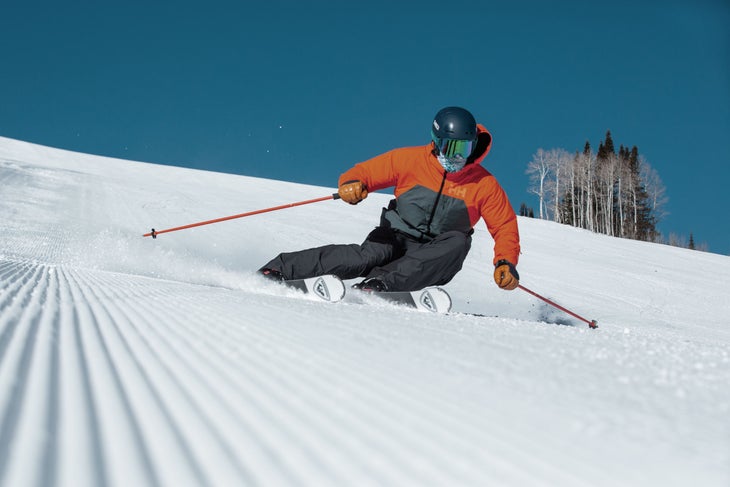
“When we pressure the inside edge of the outside ski, that leg is going to be in an internal rotation,” he explains. “When we’re on the outside edge of our inside ski in a turn, we use external rotation of the hip. It’s important that we work on hip exercises that require us to move through large ranges of motion so we build up spare [movement] capacity. If you hit some terrain or chatter and get forced into a deeper position, you want to be able to have the range to go into that position without getting hurt.”
Miller’s advice: Decrease your risk of injury and increase your agility on skis, add the 90/90 Progression to your warm-up and active recovery routines.
90/90 Progression for Increased Hip Mobility
Step 1: Get comfy in the 90/90
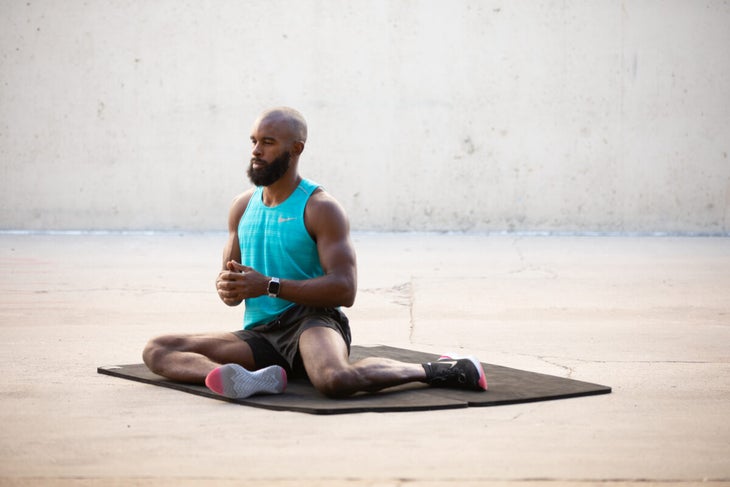
Directions:
- Sit on floor with both of your legs stretched out straight in front of you
- From here, move one leg behind you and bend at a 90 degree angle at the knee to get into a hurdler’s position; your back shin and calf should be perpendicular to your back knee
- Then bend your front leg to a 90 degree angle at the knee so that your front calf is parallel to your back thigh
- Spend a few moments and deep breaths in this position with your chest upright; you should feel a stretch in one or both of your hip flexors (if you feel discomfort in one or both of your knees, decrease your 90-degree angle)
- Switch sides so the opposite leg is in front/back
- Repeat on both sides for multiple reps, holding each side for 10-30 seconds
Step 2: 90/90 with forward lean
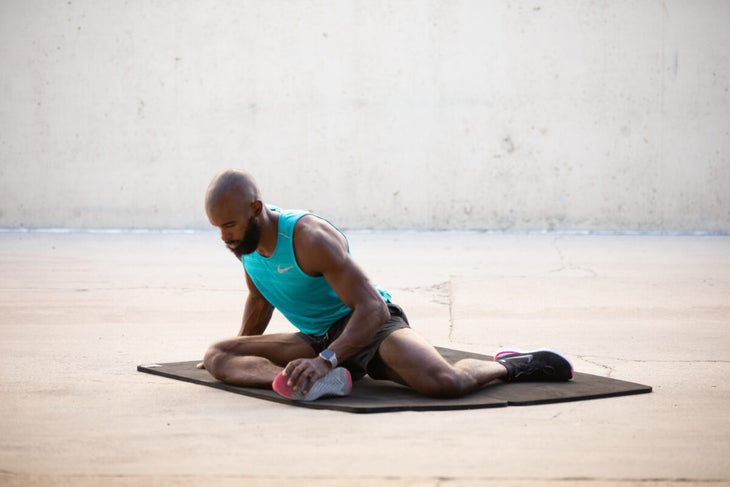
Directions:
- Once you’re comfortable in the 90/90 position on both sides, add a forward lean over your front leg by bending at the waist to bring your chest closer to the ground
- Hold for 10 seconds, then return to an upright position; repeat for multiple reps on the same side, holding for 10 seconds each time
- Switch sides by brining your other leg forward and repeat
Step 3: Assisted 90/90 rotation
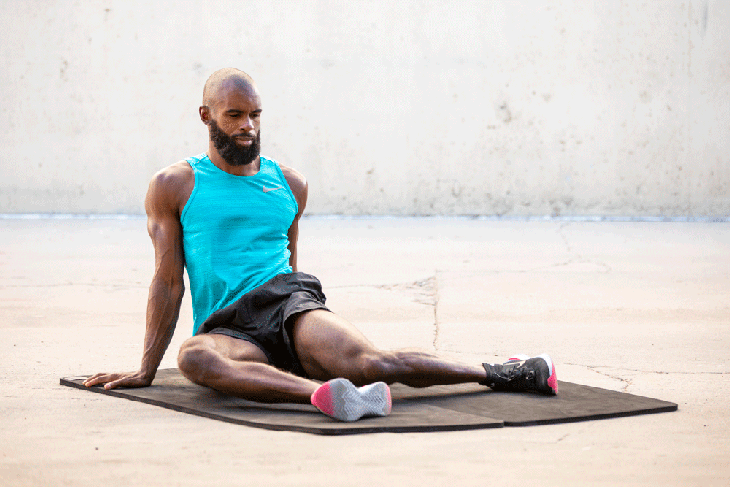
Directions:
- Now that you’re comfortable in the 90/90 position on both sides, it’s time to move directly from one side of your 90/90 into the next (with assistance)
- Get into your 90/90 starting position with your chest upright and place your hands on the ground on the side of your hips for support
- The goal now is to windmill your knees over in one motion to reach a 90/90 position on the other side; to do this, let your back leg lead the movement and only when it has reached its end range allow the front leg to follow; try to keep your legs bent at a 90-degree angle throughout this movement while heels remain firmly on the ground
- Practice moving seamlessly from one side of your 90/90 to the next while keeping your chest upright and maintaining a 90-degree angle in the legs
- Keep switching sides for multiple reps, realigning your legs to the 90-degree angle as necessary
Step 4: Assisted 90/90 rotation with forward lean
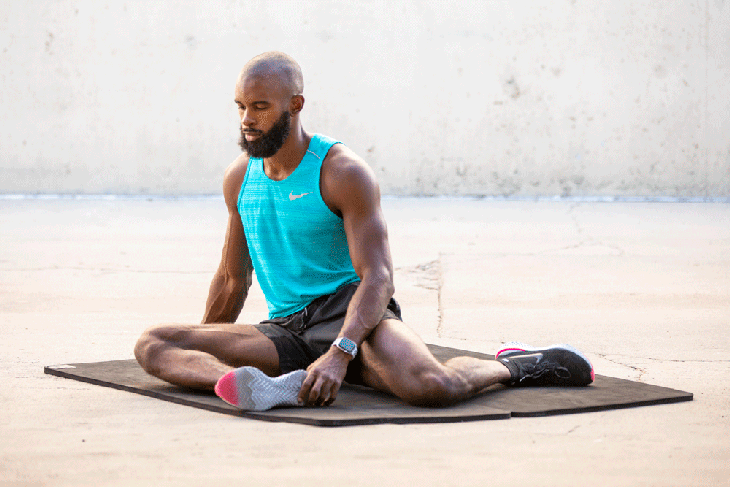
Directions:
- Once you can comfortably perform the assisted 90/90 switch, try adding a forward lean over each front leg to increase the stretch in your hip and glutes
- Hold each stretch for a minimum of 3 seconds before moving to the other side
- Repeat for multiple reps on each side
Step 4: Unassisted 90/90 rotation
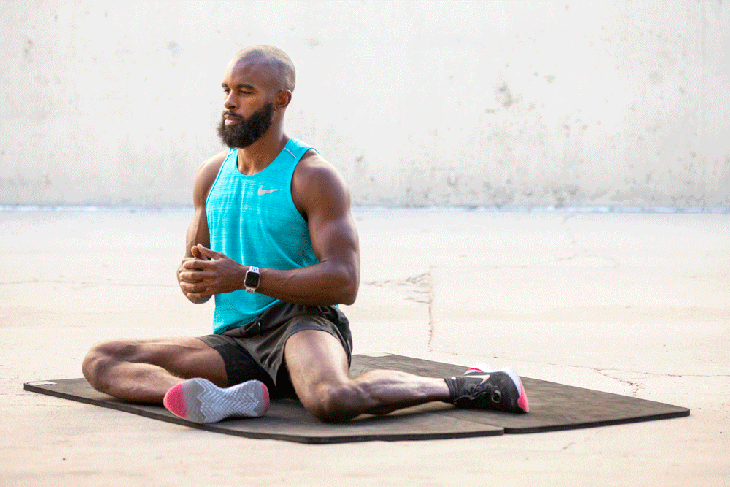
Directions:
- Once you can comfortably move from one side to the next with the support of your hands and arms, try moving from side to side without assistance
- Focus on keeping your chest upright and spine straight, and avoid initiating the movement with your upper body; all movement should come from your knees and hips
- Keep the heels of your feet firmly planted on the ground while moving from side to side
Like this workout? It’s just one of many designed by Chris Miller for SKI‘s Get Fit to Rip course on Outside Learn. The comprehensive online training plan features full workout videos that you can follow at home, no gym equipment required.
